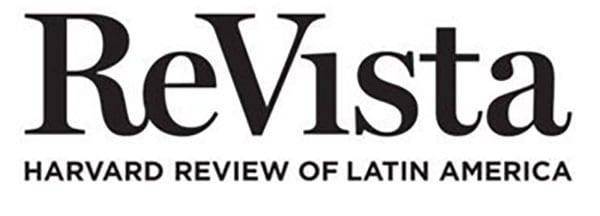Photoessay by Carlos Troncoso Matto
Ojos Propios
Forbidden to change the model, 2009
I mostly get around the city on my bicycle, and that allows me new perspectives and points of view of my city. Unusual and unnoticed locations that allow me to photograph with a greater visual space more independent of the permitted urban mobility restrictions. Thus, the titles of my first two photobooks: Adventure Tourism One and Two (2016 and 2018), in which I invite the rediscovery and enjoyment of our habitat in social conflict and architectural change.

Neoliberal Lima landscape, 2006
Thirst or no thirst, 2005
Through a series of photographs of signs and street graphics of the city of Lima, in Pixelandia my third photobook (2023), I make a visual essay on the relationship image – society in the context of the digital times we are living (photos taken between 2007 and 2023).
Nothing more stimulating than contradictory advertising provocations, 2011
Nothing better than a school vigilante, 2007
The puppy we all carry inside, 2014

Proud mestizaje of the Lima Hispanicists, 2013
Fotoensayo de Carlos Troncoso Matto
Ojos Propios

Prohibido cambiar el modelo, 2009
Gran parte de mi movilización urbana la realizo como ciclista, y eso me permite nuevas perspectivas y puntos de vista de mi ciudad. Locaciones insólitas y desapercibidas que me permiten fotografiar con un mayor espacio visual más independiente de las restricciones de movilidad urbana permitidas. Por ello los títulos de mis dos primeros fotolibros: Turismo de Aventura uno y dos (2016 y 2018), en el que invito a el re descubrimiento y goce de nuestro hábitat en conflicto social y cambio arquitectónico.

Paisaje limeño neoliberal, 2006

Sed o no sed, 2005
Mediante una serie de fotografías de letreros y gráfica callejera de la ciudad de Lima, en Pixelandia mi tercer fotolibro (2023), realizo un ensayo visual sobre la relación imagen – sociedad en el contexto de los tiempos digitales que estamos viviendo. (fotos tomadas entre los años 2007 al 2023)

Nada más estimulante que las contradictorias provocaciones publicitarias, 2011

nada mejor que un justiciero escolar, 2007

El perrito que todos llevamos dentro, 2014

Orgulloso mestizaje de los limeño hispanistas, 2013
Carlos Troncoso Matto is a visual artist and teacher (Lima 1959). He works in various media: screen printing, photography, video art, digital design.He studied engraving at the Escuela Nacional Superior Autónoma de Bellas Artes while at the same time he was an activist in the Subte Movement of the 80s in Lima, integrating diverse cultural and artistic collectives. In 1997, he founded the LLavenelojo serigraphy workshop, where he edits prints by various Peruvian artists. In addition, in this trajectory, he has generated the diffusion of contemporary Peruvian work through non-commercial circuits.
Contact: ctron001@gmail.com
Photos and commentaries: https://www.facebook.com/profile.php?id=1051625835
Carlos Troncoso Matto es artista visual y docente (Lima 1959). Realiza obras en diversos medios y soportes: serigrafía, fotografía, videoarte, diseño digital. Estudió grabado en la Escuela Nacional Superior Autónoma de Bellas Artes mientras paralelamente era activista en la Movida Subte de la década de los 80s en Lima, integrando diversos colectivos culturales y artísticos.En 1997 fundó el taller de serigrafía LLavenelojo, en el que edita hasta la actualidad grabados de diversos artistas peruanos. Además, en esta trayectoria ha generado la difusión de obra contemporánea peruana por circuitos no comerciales. Participó de los eventos formativos y de consolidación del videoarte peruano (1997 al 2005), en colaboración e interacción con: MUTA artefacto interactivo multiuso, ATA Alta Tecnología Andina y DACP del cual es miembro fundador (Lima 2000 – 2006). Fue un ganador del concurso de fotos “Peru de Contrastes” de Ojos Propios.
Contacto: ctron001@gmail.com
Fotos y comentarios en https://www.facebook.com/profile.php?id=1051625835
Related Articles
The History of Inequality
For the last few decades, a strong consensus has held that Latin America is not only the most economically unequal region in the world, but also one where inequality has become structurally entrenched. Even in countries where income levels are relatively high by global standards, a small elite continues to control a disproportionate share of national wealth. This consensus reflects a broader shift in the development community and public arenas.
Waxing and Waning: Institutional Rhythms of Inequality
Zelia Maria Magdalena Nuttall was famous in her time, well-known as an archaeologist, an Americanist, an antiquarian, an ethnologist, a folklorist and “a lady scientist”; she was a woman “making it” in a man’s world from the 1880s to the 1930s. Deeply engaged in research about ancient civilizations in Mexico, she led a remarkable life as a pioneer in the evolution of anthropology as a field of study.
The Biology of Inequality
Asked to write about inequality in Latin America, an evolutionary biologist would naturally think first of human history. Systemic inequalities among groups of people has taken many forms over the centuries, since long before the colonial era. For at least as long as there have been cities, there have been inequalities in access to resources, in the form of housing, employment, education and even food and freedom itself. These historic and continuing injustices are widely-recognized. What I wish to write about is the much less visible, but more pervasive, impact of a source of inequalities—the stress of experiencing discrimination—on health that is, perhaps surprisingly, an ancillary consequence of an even older human history of exposure to stress challenges in both our physical and our social environments.




